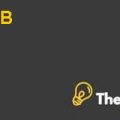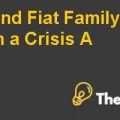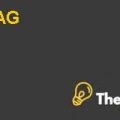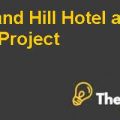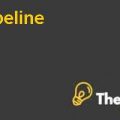Enron’s Demise Were There Warning Signs Case Study Solution
Question 1
Perform Enron’s financial analysis (profitability, leverage, and cash flow performance) by calculating the necessary ratios during the period of 1998-2000.
The financial analysis has been performed for Enron Corporation for the period of 1998 to 2000 in the excel spreadsheet. All the ratio computations are also shown in exhibit 1 in the appendices.
Profitability
First, if we look at the growth of total revenue, then the revenue in 2000 has grown by 151.27% which seems misleading because the net income of the company has grown at the same pace. Although, the total expenses have also grown at a similar rate of 151.43% but the net income of the company has only grown by 9.63% in 2000. This is suspicious and it shows that the revenue recognition of the company is incorrect and not according to the financial reporting standards. One of the major reasons for the rapid increase in the revenues could be the spike in the natural gas prices in 2000 within US and the trading of the metals had also contributed to around 10% of the total revenues in 2000. However, these factors can also not justify the significant growth in the revenues of the company.
There has been increased trading growth for the company and this might have diminished the margins of the company. If we look at the return on equity, then this ratio has declined from 9.33% to 8.54% between 1999 and 2000. Similar is the case with the return on asset ratio which has declined from 2.68% to 1.49%. Finally, the net profit margin of the company has also reduced to 0.97% from 2.23% between 1999 and 2000. The ROE shows that the company is not able to generate good returns for the shareholders. The company has increased its investment in PPE but the company is not generating good returns over its invested assets. These ratios show that the profitability position of the company is weak and the net income for Enron has been declining since 1998. One of the reasons for the low profitability ratios of the company is the transformation of Enron to a trading company from a traditional pipeline company. This is discussed in the next question.
Leverage Ratios
The long term debt for the company has been increasing over the years and it shows that the company was becoming highly leveraged. It is clearly evident that the current debt plus the long term debt of the company has increased by 165.68% in 2000. The equity of the company has also grown but the growth is not the same. The debt to equity ratio for the company has increased in 2000 to 3.22 from 1.45 in 1999. This shows that the company is not strong in its solvency position. This could be due to the fact that the company has not been accounting for the liabilities and the assets of the affiliates based on the equity basis of accounting. The data on which the above ratio is based is non-consolidated data and thus it could be misleading.
After this, we have calculated the interest coverage ratio for Enron. Although, the interest coverage ratio for the company has slightly declined in 2000 but it is still high and the ratio shows that the company has enough operating income to repay the interest outstanding on the long term debt of the company. Most of the income is still in the form of receivables and the total interest expense that is paid by the affiliates of the company has not been included here, therefore, if the income declines in future or the interest increases, the company might face difficulties in repaying its outstanding debt obligations.
Cash Flow Ratios
The net cash flow from the operations has been increasing over the three-year period due to increases in the working capital investment and the sound working capital policies of the company. The trade receivables for the company had also increased from 1999 to 2000 and this has decreased the operating income for the company. The risk of bad debt is high as the majority of the cash earned by the company is in the form of receivables.
The accounts payable for Enron have also increased and this is a positive sign and it means that the company has been delaying its payments to the suppliers which creates a positive impact on the operating cash flow of the company. The free cash flow for the company has been increased between 1998 and 1998 but then it declined significantly and has become negative in 2000. This is alarming for the company as the FCF over sales and the FCF over net income ratios have also increased in 1999 but then became negative in 2000. The analysis shows that the company might face cash flow shortages in the future years.
Enron’s Demise Were There Warning Signs Harvard Case Solution & Analysis
Question 2
Evaluate Enron’s long-run financial performance. Does the data reflect Enron’s transformation from a pipeline company to a trading company?
The balance sheet of Enron shows that the current assets that are the price risk management activities of the company have increased in 2000. The investments and other assets also represent the price risk management activities and these have also increased in 2000. Other price risk management activities are represented by the current liabilities and the other liabilities. For instance, the current liabilities and other liabilities have increased to $10495 and $2692 in 2000 from $ 1836 and $ 1587 respectively.
If we look at the cash flow from the operations of the company, then the net assets have also increased which show that the price risk management activities have also increased. All these activities show that Enron has been becoming a trading company from the traditional pipeline company. Moreover, we have examined the long run performance of the company by computing three key ratios based on the exhibit 2 data for the long historical years of the company from 1990 to 2000. We have computed the return on equity, operating margin and the property plant and equipment as a percentage of total assets ratios. These are shown in exhibit 2 in the appendices.....................
This is just a sample partial work. Please place the order on the website to get your own originally done case solution.

